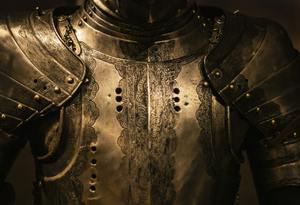5. Important items
Which objects could be part of the theme of your story? For example, if the game is in a stable, a space station, a pharaoh’s grave, a top chef’s kitchen, or at Hogwarts, it calls for certain items. These items are good to list, as you can use them to build excellent puzzles and tasks that are seamlessly related to the story.
Example: A story at Hogwarts could include a maze, a magic wand, a spell book, magic potion bottles, a game of chess, a fluttering ghost, a message revealed in UV light, a Phoenix bird, robes, a crystal ball, snake whispers, and more.
Best of all, when you build a game for your home or workplace, you can use items that are already at hand and upgrade them to game props. No need to go shopping for magic wands! You can make the cover of the spell book from a couple of pieces of cardboard covered with cloth and papers stained with a tea bag to become old-looking. The book can be tied with a suitable piece of string. Of course, hand-written spells with real ink are the most immersive, but if your ink bottle is dry, you’ll find many fonts online that you can use to write spells on a computer. And the magic wand? There are good branches in the forest that can be painted and decorated. You can pick a lot of magic wands and make a puzzle out of them! Phoenix birds are a bit harder to come by, but they drop feathers, don’t they, so you can lay a trail of feathers or design a colour puzzle using different coloured feathers.

6. The building blocks of the story
The escape game consists of missions that take the story forward towards the final climax and achievement of the goal. The tasks can be linear, that is, you must complete one task to get to the next, like beads on a string. Non-linear problems can be solved simultaneously in random order. This allows the team to split and work on different tasks at the same time, which saves time and and allows everyone to be involved in the solving.
If you are making a game for a large group, such as six players, you should design the game so that it is at least partially non-linear. Players enjoy the fact that everyone has enough to do during the game. Linear tasks, on the other hand, condense the story and are good for creating climaxes, for example, before some new space opens. It can be helpful to draw a map of the game flow with the puzzles, like a molecule with cells; sometimes dividing into many simultaneous tasks, sometimes uniting into one crucial task that everybody needs to be involved in.




